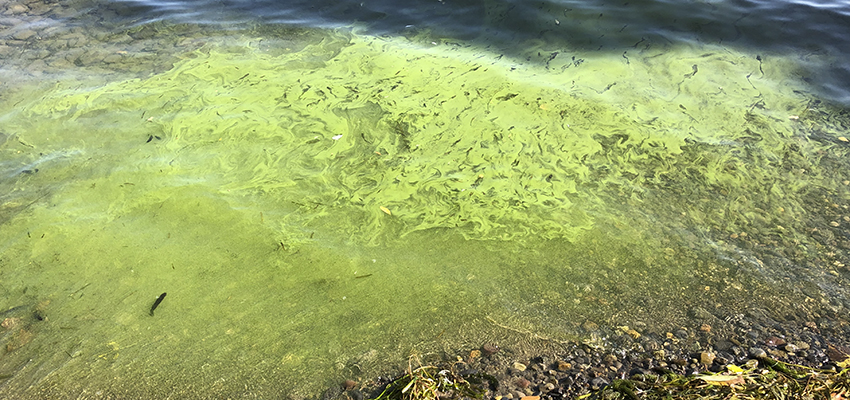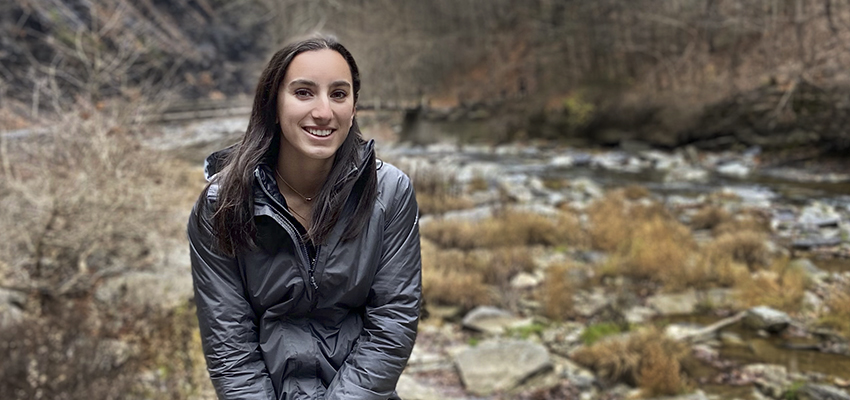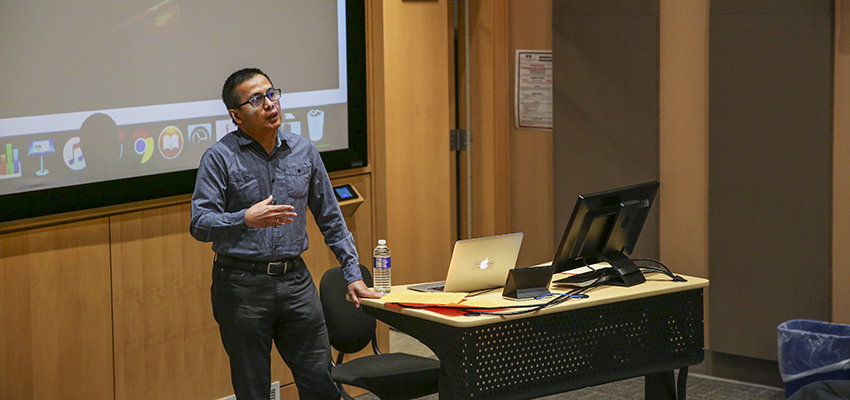
HWS News
10 June 2021 • Research • STEM • Sustainability HWS Awarded Nearly $50K for Finger Lakes Research
Two new grants support HWS researchers in their exploration of harmful algal blooms, both historical and contemporary, in the Finger Lakes.
With funding from the Great Lakes Research Consortium (GLRC), Hobart and William Smith Colleges continue important environmental research into the health of the Finger Lakes and their watersheds.
A $25,000 grant will fund an international team of researchers, led by Associate Professor of Geoscience Tara Curtin and Finger Lakes Institute Post-Doctoral Research Scientist Michael Brown, Ph.D., who will measure shifts in algal abundance, composition and nutrients over the past century. Researchers from Cornell University, Syracuse University and the University of Regina, Saskatchewan, will join the team in evaluating records of Canandaigua Lake, Cayuga Lake, Owasco Lake and Seneca Lake, which have all experienced toxic harmful algal bloom (HABs) events since 2017. The team will use sediment cores to develop a long-term record of HABs and the associated environmental drivers as a data-based tool for developing mitigation strategies. New York’s Ontario County Water Resources Council is providing additional funding for this work.
A separate, $23,000 grant from the GLRC will fund another collaborative research project — including the FLI researchers and local environmental management groups — to evaluate technologies to treat agricultural runoff in the Great Lakes region. The research will inform the design of field-scale systems capable of removing phosphorous from runoff which, if left untreated, can lead to harmful algal blooms.
Tile drainage, a commonly used agricultural water management practice, “provides many positive benefits to the farm,” says Smith, but it can allow for “short-circuiting” of best management practices advocated by the Natural Resources Conservation Service (NRCS).
Seneca Watershed Steward Ian Smith, who is based at Hobart and William Smith’s Finger Lakes Institute, will lead the project, working with the Seneca Watershed Intermunicipal Organization; the Yates, Seneca and Ontario County Soil and Water Conservation Districts; and Seneca Farms Biochar of Odessa, N.Y.
Smith explains that the GLRC-funded project’s “short-term goal is to prove the viability of integrating best management practice design with tile drainage treatment via low/no-cost components that can be deployed in low value, edge-of-field areas. Long-term, it would result in the establishment of a new NRCS conservation standard capable of removing vast quantities of phosphorous that also establishes a new and sustainable market for waste byproducts currently being landfilled.”
The GLRC is an organization of 18 New York colleges and universities, including HWS, with nine affiliate campuses in Ontario, Canada. The consortium is dedicated to collaborative research and education on the Great Lakes, with nearly 400 member faculty who are conducting research in every facet of Great Lakes science. Through research, instruction and public service, GLRC works to improve the understanding of the Great Lakes ecosystem, including the physical, biological, and chemical processes that shape it, as well as the social and political forces that affect human impact on the lakes and their associated economic resources.
The photo above, featuring an algal bloom on Seneca Lake, comes from a citizen science program of the Seneca Lake Pure Waters Association, a local nonprofit committed to preserving, protecting and promoting the lake’s abundant resources.



